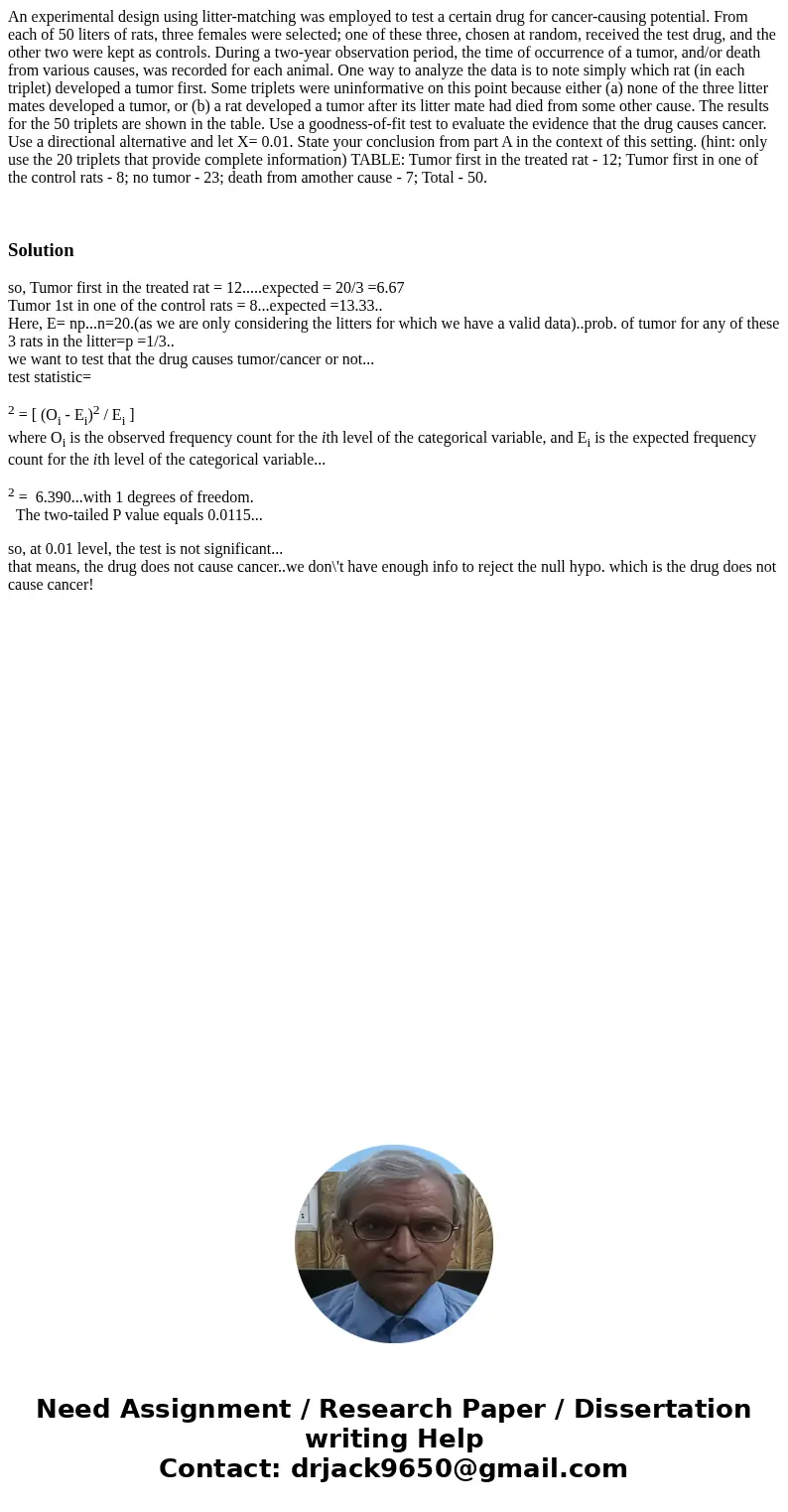An experimental design using littermatching was employed to
An experimental design using litter-matching was employed to test a certain drug for cancer-causing potential. From each of 50 liters of rats, three females were selected; one of these three, chosen at random, received the test drug, and the other two were kept as controls. During a two-year observation period, the time of occurrence of a tumor, and/or death from various causes, was recorded for each animal. One way to analyze the data is to note simply which rat (in each triplet) developed a tumor first. Some triplets were uninformative on this point because either (a) none of the three litter mates developed a tumor, or (b) a rat developed a tumor after its litter mate had died from some other cause. The results for the 50 triplets are shown in the table. Use a goodness-of-fit test to evaluate the evidence that the drug causes cancer. Use a directional alternative and let X= 0.01. State your conclusion from part A in the context of this setting. (hint: only use the 20 triplets that provide complete information) TABLE: Tumor first in the treated rat - 12; Tumor first in one of the control rats - 8; no tumor - 23; death from amother cause - 7; Total - 50.
Solution
so, Tumor first in the treated rat = 12.....expected = 20/3 =6.67
Tumor 1st in one of the control rats = 8...expected =13.33..
Here, E= np...n=20.(as we are only considering the litters for which we have a valid data)..prob. of tumor for any of these 3 rats in the litter=p =1/3..
we want to test that the drug causes tumor/cancer or not...
test statistic=
2 = [ (Oi - Ei)2 / Ei ]
where Oi is the observed frequency count for the ith level of the categorical variable, and Ei is the expected frequency count for the ith level of the categorical variable...
2 = 6.390...with 1 degrees of freedom.
The two-tailed P value equals 0.0115...
so, at 0.01 level, the test is not significant...
that means, the drug does not cause cancer..we don\'t have enough info to reject the null hypo. which is the drug does not cause cancer!

 Homework Sourse
Homework Sourse